Build Diary entries for September 2019
Here are the diary entries for this month. You can use the forward and backward links to see the next or previous months. Most photos taken before 2018 are small size. From 2018 onwards, most photos you see below will have a link to a full size image by clicking on the photo.
| Tender Steps |
| 09/09/2019 |
| |
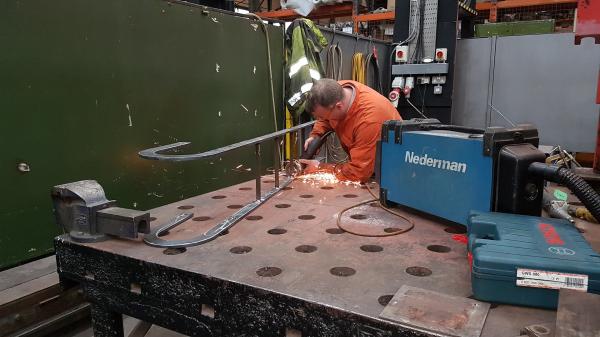 |
| |
Ian from CTL Seal does a final bit of fettling on the tender tank steps - another item to add to the set of tender parts that we are steadily amassing. Today we've been getting ready for Wednesday of this week when a specialist laser measuring firm will be checking the frame alignment. Once we have confirmed that the alignment is correct, we can start installing the fitted bolts to fix the frame components. |
| |
|
| Main Frame Alignment. |
| 11/09/2019 |
| |
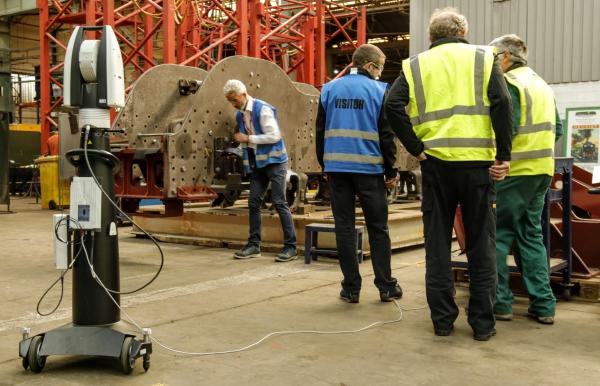 |
| |
Today was a very important day in the construction of HENGIST as work has started on the laser tracking for the alignment of the frames. Hexagon Metrology were on site at CTL with their brand new Leica AT 960-MR Absolute Tracker. We are indebted to the Hexagon Metrology guys, Tim Gears and Barry Dimelow, pictured in the blue hi-vis jackets for doing this work for us. Also in the picture are Phil Yates and Ian Henderson from the HENGIST engineering team. |
| |
|
| Tender Wing Plates |
| 16/09/2019 |
| |
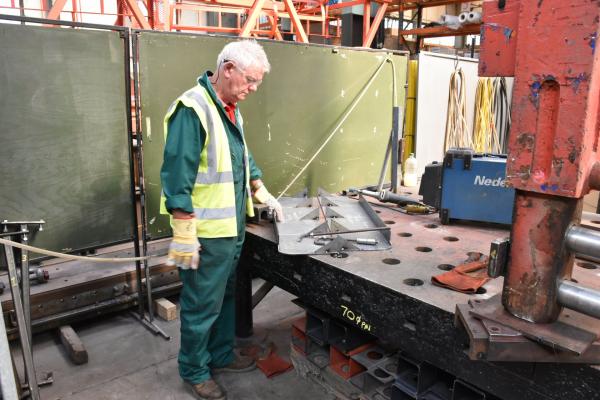 |
| |
Here's Mike Sedgley with the tender wing plates. Ian from CTL Seal has helded the triangular fillets onto the plates. The next job will be to cut down the vertical edges (as seen in the photo) to the correct height. The surplus metal is to allow the plates to be bent in the bending machine |
| |
|
| Horizontal Stretchers - 2 |
| 17/09/2019 |
| |
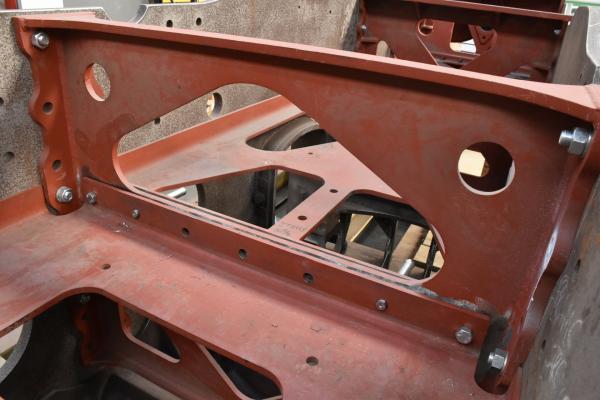 |
| |
This photo shows the other end of the rear horizontal stretcher. You will note that there is a gap between the vertical stretcher and the flange of the horizontal stretcher. We have a packing plate that now has to be machined so that it will tightly fit the gap. However, the job is a bit more difficult as to drill the fore and aft holes to size, we can't get a drill in - there's not enough space for the drill to sit perpendicular to the hole. So first we remove the rear horizontal stretcher (number 4) and drill/ream the aft holes for stretcher number 3. Then we refit stretcher number 4 and remove stretcher number 3. Now we can drill the fore holes for stretcher number 4. Then repeat for stretcher 2. Both stretcher 2 and stretcher 3 will need packing plates. Once the packing plates have been sorted, the side bolts can be fitted.
|
| |
|
| Motion Brackets |
| 22/09/2019 |
| |
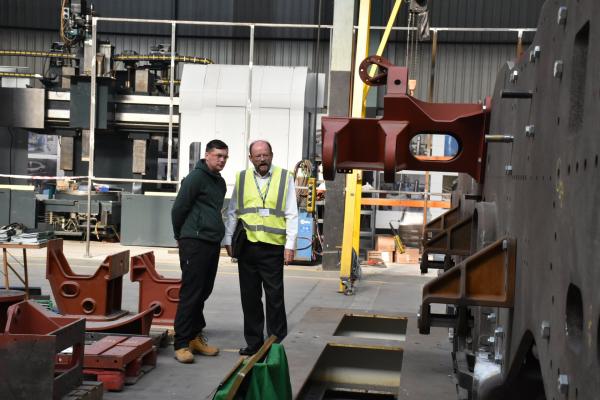 |
| |
As a temporary measure for the AGM, CTL Seal fitted the motion brackets to the frame. They are a substantial fabrication. Here Geoff Turner and Anthony Pilkington - from CTL Seal - discuss the assembly. Photos from the AGM including the latest set of bogie patterns can be found on this web site. |
| |
|
| Drilling of Frame Holes Starts |
| 23/09/2019 |
| |
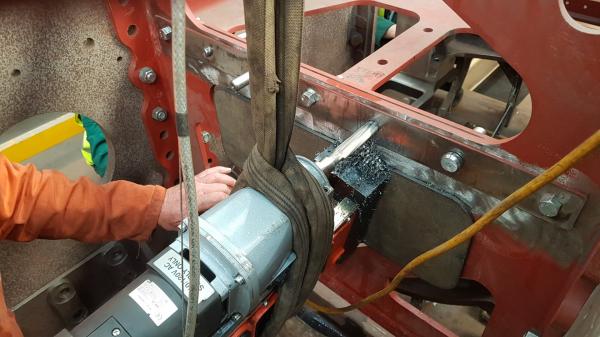 |
| |
Drilling out of the frame holes to suit the fitted bolts began today. Here you can see the join between the horizontal flanged frame stretcher and the vertical stretcher being reamed out to 7/8" |
| |
|
| Fitted Bolt Installation Continues |
| 30/09/2019 |
| |
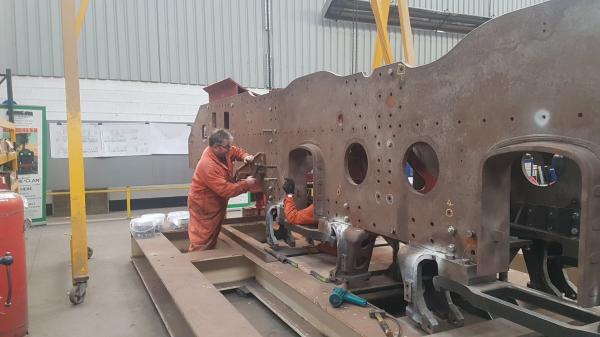 |
| |
After a small intermission to ensure that the frames sit cleanly on the front cast steel stretcher, drilling for fitted bolts continues. Here Pete from CTL Seal is working to get the front vertical stretcher correctly lined up. A series of pins are being used to ensure that alignment before starting drilling. |
| |
|
| Bogie Frame Stretcher and AWS Receiver Carrier |
| 30/09/2019 |
| |
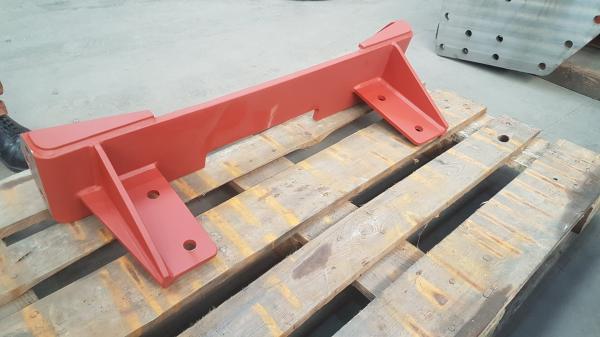 |
| |
A new bogie component fresh from the fabrication shop. When the Clans were first built, this stretcher was not fitted. As the British Railways Automatic Warning System was rolled out, it was necessary to find a mounting position for the AWS receiver. Most of the Clans received AWS during 1959 to 1961 and this stretcher was fitted to the front of the bogie. We haven't manufactured the actual AWS receiver mounting yet (bolted to the flanges with the pair of holes). Signalling systems are under a lot of change and we feel its best to wait until later in the project. |
| |
|









